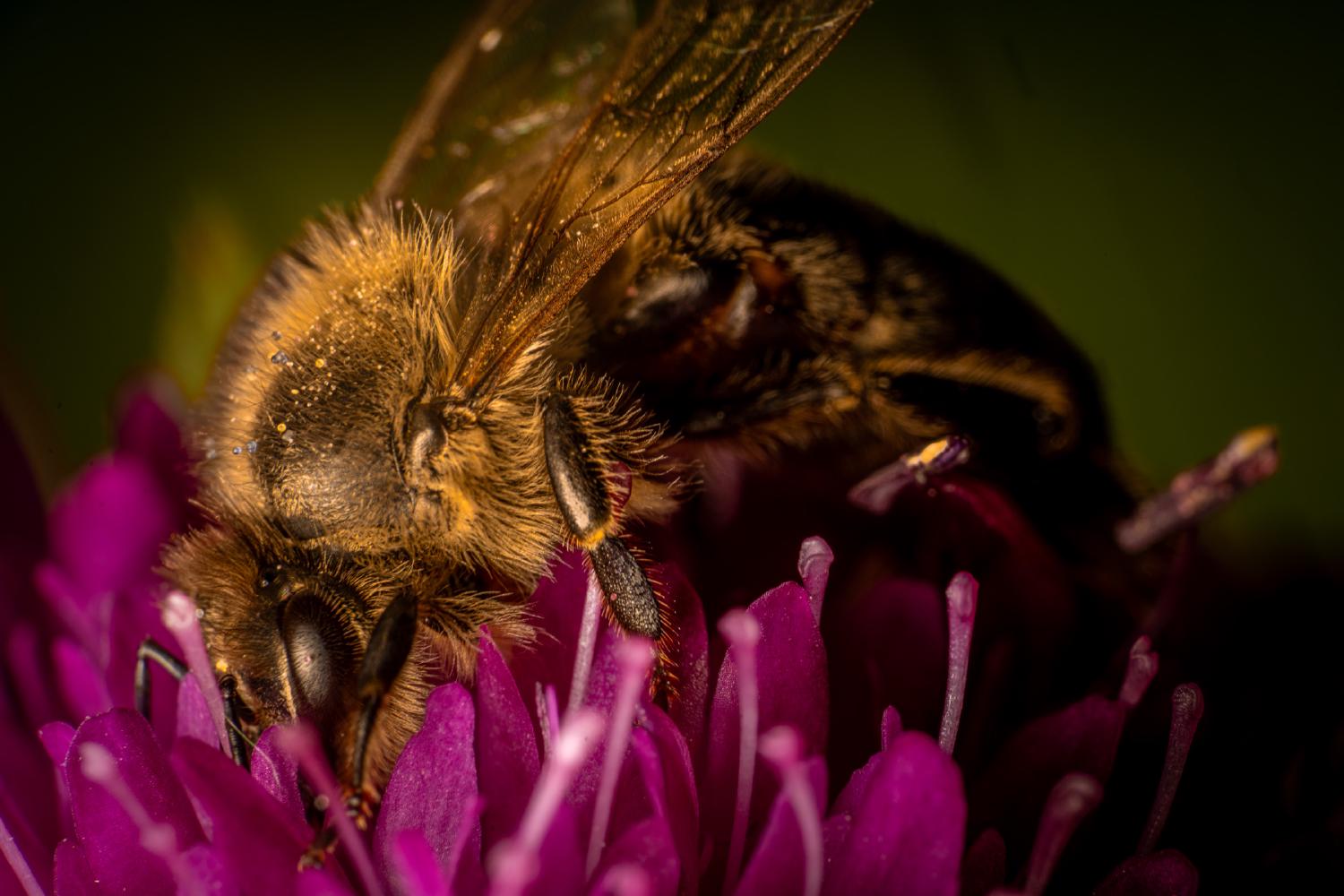Western Honey Bee
Lat. “Apis mellifera“
species
of family
“Honey Bees, Bumble Bees, and Allies“
1 species
The western honey bee is found on every continent except Antarctica and is believed to have originated in Africa or Asia. Humans have played a role in spreading the species to various parts of the world. The honey bee exhibits social caste behavior, with different roles and conflicts between workers and the queen. Beekeeping has been practiced for thousands of years, with humans selectively breeding honey bees for desirable traits. The honey bee genome has been fully sequenced and analyzed, revealing unique characteristics and genetic diversity. While honey bees are generally beneficial, they can have negative impacts as non-native invasive species in certain environments. The honey bee has close relatives in the genus Apis, all originating in Asia except for Apis mellifera which originated in Europe, Asia, and Africa.
Distribution and habitat
The western honey bee can be found on every continent except Antarctica. The species is believed to have originated in Africa or Asia, and it spread naturally through Africa, the Middle East and Europe. Humans are responsible for its considerable additional range, introducing European subspecies into North America (early 1600s), South America, Australia, New Zealand, and eastern Asia.
Social caste
Behavioral and physiological differences between castes and subcastes arise from phenotypic plasticity, which relies on gene expression rather than heritable genotypic differences.
Queen–worker conflict
When a fertile female worker produces drones, a conflict arises between her interests and those of the queen. The worker shares one-half of her genes with the drone and one-quarter with her brothers, favouring her offspring over those of the queen. The queen shares one-half of her genes with her sons and one-quarter with the sons of fertile female workers. This pits the worker against the queen and other workers, who try to maximize their reproductive fitness by rearing the offspring most related to them. This relationship leads to a phenomenon called “worker policing”. In these rare situations, other worker bees in the hive, who are genetically more related to the queen’s sons than those of the fertile workers, patrol the hive and remove worker-laid eggs. Another form of worker policing is aggression toward fertile females. Some studies suggest a queen pheromone which may help workers distinguish worker-laid and queen-laid eggs, but others indicate egg viability as the key factor in eliciting the behavior.Worker policing is an example of forced altruism, where the benefits of worker reproduction are minimized and that of rearing the queen’s offspring maximized. In very rare instances, workers subvert the policing mechanisms of the hive, laying eggs faster than other workers remove them; this is known as anarchic syndrome. Anarchic workers can activate their ovaries at a higher rate and contribute a greater proportion of males to the hive. Although an increase in the number of drones decreases the overall productivity of the hive, it increases the reproductive fitness of the drones’ mother. Anarchic syndrome is an example of selection working in opposite directions at the individual and group levels for the stability of the hive.Under ordinary circumstances, if the queen dies or is removed, reproduction in workers increases because a significant proportion of workers then have activated ovaries. The workers produce a last batch of drones before the hive collapses. Although during this period worker policing is usually absent, in certain groups of bees it continues.According to the strategy of kin selection, worker policing is not favored if a queen mates just once. In that case, workers are related by three-quarters of their genes, and the sons of workers are related more than usual to sons of the queen. Then the benefit of policing is negated. Experiments confirming this hypothesis have shown a correlation between higher mating rates and increased rates of worker policing in many species of social hymenoptera.
Domestication
Humans have been collecting honey from western honey bees for thousands of years, with evidence in the form of rock art found in France and Spain, dating to around 7,000 BCE. The western honey bee is one of the few invertebrate animals to have been domesticated. Bees were likely first domesticated in ancient Egypt, where tomb paintings depict beekeeping, before 2600 BC. Europeans brought bees to North America in 1622.Beekeepers have selected western honey bees for several desirable features: the ability of a colony to survive periods with little food the ability of a colony to survive cold weather resistance to disease increased honey production reduced aggressiveness reduced tendency to swarm reduced nest building easy pacification with smokeThese modifications, along with artificial change of location, have improved western honey bees from the point of view of the beekeeper, and simultaneously made them more dependent on beekeepers for their survival. In Europe, cold weather survival was likely selected for, consciously or not, while in Africa, selection probably favoured the ability to survive heat, drought, and heavy rain.Authors do not agree on whether this degree of artificial selection constitutes genuine domestication. In 1603, John Guillim wrote “The Bee I may well reckon a domestic insect, being so pliable to the benefit of the keeper.” More recently, many biologists working on pollination take the domesticated status of western honey bees for granted. For example, Rachael Winfree and colleagues write “We used crop pollination as a model system, and investigated whether the loss of a domesticated pollinator (the honey bee) could be compensated for by native, wild bee species.” Similarly, Brian Dennis and William Kemp write: “Although the domestication of the honey bee is closely connected to the evolution of food-based socio-economic systems in many cultures throughout the world, in current economic terms, and in the U.S. alone, the estimated wholesale value of honey, more than $317 million dollars in 2013, pales in comparison to aggregate estimated annual value of pollination services, variously valued at $11–15 billion.“On the other hand, P. R. Oxley and B. P. Oldroyd (2010) consider the domestication of western honey bees, at best, partial. Oldroyd observes that the lack of full domestication is somewhat surprising, given that people have kept bees for at least 7,000 years. Instead, beekeepers have found ways to manage bees using hives, while the bees remain “largely unchanged from their wild cousins”.Leslie Bailey and B. V. Ball, in their book Honey Bee Pathology, call western honey bees “feral insects”, in contrast to the domestic silk moth (Bombyx mori) which they call “the only insect that has been domesticated”, and refer to the “popular belief among many biologists as well as beekeepers that bees are domesticated”. They argue that western honey bees are able to survive without human help, and in fact require to “be left at liberty” to survive. Further, they argue that even if bees could be raised away from the wild, they would still have to fly freely to gather nectar and pollinate plants. Therefore, they argue, beekeeping is “the exploitation of colonies of a wild insect”, with little more than the provision of a weatherproof cavity for them to nest in. Likewise, Pilar de la Rua and colleagues argue that western honey bees are not fully domesticated, because “endemic subspecies-specific genetic footprints can still be identified in Europe and Africa”, making conservation of wild bee diversity important. Further, they argue that the difficulty of controlling drones for mating is a serious handicap and a sign that domestication is not complete, in particular as “extensive gene flow usually occurs between wild/feral and managed honeybee populations”.
Beekeeping
The western honey bee is a colonial insect which is housed, transported by and sometimes fed by beekeepers. Honey bees do not survive and reproduce individually, but as part of the colony (a superorganism). Western honey bees collect flower nectar and convert it to honey, which is stored in the hive. The nectar, transported in the bees’ stomachs, is converted with the addition of digestive enzymes and storage in a honey cell for partial dehydration. Nectar and honey provide the energy for the bees’ flight muscles and for heating the hive during the winter. Western honey bees also collect pollen which, after being processed to bee bread, supplies protein and fat for the bee brood to grow. Centuries of selective breeding by humans have created western honey bees which produce far more honey than the colony needs, and beekeepers (also known as apiarists) harvest the surplus honey.
Beekeepers provide a place for the colony to live and store honey. There are seven basic types of beehive: skeps, Langstroth hives, top-bar hives, box hives, log gums, D. E. hives, and miller hives. All U.S. states require beekeepers to use movable frames to allow bee inspectors to check the brood for disease. This allows beekeepers to keep Langstroth, top-bar and D.E. hives without special permission, granted for purposes such as museum use. Modern hives also enable beekeepers to transport bees, moving from field to field as crops require pollinating (a source of income for beekeepers). In cold climates, some beekeepers have kept colonies alive (with varying degrees of success) by moving them indoors for winter. While this can protect the colonies from extremes of temperature and make winter care and feeding more convenient for the beekeeper, it increases the risk of dysentery and causes an excessive buildup of carbon dioxide from the bees’ respiration. Inside wintering has been refined by Canadian beekeepers, who use large barns solely for the wintering of bees; automated ventilation systems assist in carbon dioxide dispersal.
Genome
Female bees are diploid and have 32 chromosomes, whereas males are haploid and have only 16. As of October 28, 2006, the Honey Bee Genome Sequencing Consortium fully sequenced and analyzed the genome of Apis mellifera, the western honey bee. Since 2007, attention has been devoted to colony collapse disorder, a decline in western honey bee colonies in a number of regions. The western honey bee is the third insect, after the fruit fly and the mosquito, whose genome has been mapped. According to scientists who analyzed its genetic code, the honey bee originated in Africa and spread to Europe in two ancient migrations. Scientists have found that genes related to smell outnumber those for taste, and the European honey bee has fewer genes regulating immunity than the fruit fly and the mosquito. The genome sequence also revealed that several groups of genes, particularly those related to circadian rhythm, resembled those of vertebrates more than other insects. Another significant finding from the honey bee genome study was that the western honey bee was the first insect to be discovered with a functional DNA methylation system since functional key enzymes (DNA methyltransferase-1 and -3) were identified in the genome. DNA methylation is one of the important mechanisms in epigenetics to study gene expression and regulation without changing the DNA sequence, but modifications on DNA activity. DNA methylation later was identified to play an important role in gene regulation and gene splicing. The genome is unusual in having few transposable elements, although they were present in the evolutionary past (remains and fossils have been found) and evolved more slowly than those in fly species.Since 2018 a new version of the honey bee genome is available on NCBI (Amel_HAv3.1, BioProject ID: PRJNA471592). This assembly contains full chromosome length scaffolds, which means that the sequence data for each chromosome is contiguous, and not split between multiple pieces called scaffolds. The existence of a highly contiguous reference genome for a species enables more detailed investigations of evolutionary processes that affect the genome as well as more accurate estimations of for example differentiation between populations and diversity within populations. An important process that shapes the honey bee genome is meiotic recombination, the rate of which is strongly elevated in honey bees and other social insects of the Hymenoptera order compared to most other eukaryotic species except fungi and protozoa. The reason for elevated recombination rates in social Hymenoptera is not fully understood, but one theory is that it is related to their social behaviour. The increased genetic diversity resulting from high recombination rates could make the workers less vulnerable to parasites and facilitate their specialisations to different tasks in the colony.
As an environmental threat
Some entomologists have observed that non-native, feral western honey bees can have negative impacts within their non-native environment. Imported bees may displace native bees, and may also promote reproduction of invasive plants ignored by native pollinators.Honey bees are not native to the Americas, arriving with colonists in North America in the 18th century. Thomas Jefferson mentioned this in his Notes on the State of Virginia:
The honey-bee is not a native of our continent. Marcgrave indeed mentions a species of honey-bee in Brasil. But this has no sting, and is therefore different from the one we have, which resembles perfectly that of Europe. The Indians concur with us in the tradition that it was brought from Europe; but, when, and by whom, we know not. The bees have generally extended themselves into the country, a little in advance of the white settlers. The Indians therefore call them the white man’s fly, and consider their approach as indicating the approach of the settlements of the whites. Sources may claim that honey bees (Apis mellifera) have become an invasive species in the United States, outcompeting native pollinators for food. However, while the USDA lists Africanized honeybees (Apis mellifera scutellata) as an invasive species, it does not classify western honey bees as invasive.With an increased number of honey bees in a specific area due to beekeeping, domesticated bees and native wild bees often have to compete for the limited habitat and food sources available. Western honey bees may become defensive in response to the seasonal arrival of competition from other colonies, particularly Africanized bees which may be on the offence and defence year round due to their tropical origin. In the United Kingdom, honey bees are known to compete with native bumblebees such as Bombus hortorum, because they forage at the same sites. To resolve the issue and maximize both their total consumption during foraging, bumblebees forage early in the morning, while honey bees forage during the afternoon.A 2017 systematic review looked at the impacts of managed bees on wild bee populations. In addition to honey bees, this includes bumble bees and some solitary bees. The analysis looked at resource competition and changes in plant communities. It also discussed how managed bees may interact with wild bees by transmitting pathogens. It found an equal number of studies reporting both positive and negative effects on plant communities. Studies examining resource competition had significant variability in their results while most studies on pathogen transmission pointed to potentially detrimental impacts. The researchers noted that most studies documented the possibility of certain interactions without actually measuring the direct effects.The very generalized nature of the honey bee’s nectar-gathering activities, potentially visiting dozens of different species in a single day, means that a flower visited by a honey bee will often get very little pollen from its species. This diminished pollination can reduce the plant’s ability to produce seeds, especially when the honey bees are squeezing out the native pollinators for a species, a problem occurring all over the United States because of honey bees and other invasive species.Most flowering plants depend on specialized pollinators to efficiently fertilize them. Cucurbits, for example, are pollinated by squash bees that specifically visit the early-blooming male flowers before sunrise, when honey bees are inactive, and then return to pollinate the female flowers later in the day. Such symbiotic relationships also mean that the specialized pollinator will be covered mainly in its host’s specific pollen. Unlike native bees, they do not properly extract or transfer pollen from plants with pore anthers (anthers which only release pollen through tiny apical pores); this requires buzz pollination, a behavior rarely exhibited by honey bees. Honey bees reduce fruiting in Melastoma affine, a plant with pore anthers, by robbing its stigmas of previously deposited pollen.
Close relatives
Apart from Apis mellifera, there are six other species in the genus Apis. These are Apis andreniformis, Apis cerana, Apis dorsata, Apis florea, Apis koschevnikovi, and Apis nigrocincta. These species all originated in southern and southeastern Asia. Only Apis mellifera is thought to have originated in Europe, Asia, and Africa.
See also
Apitherapy Bee bearding Beeline Characteristics of common wasps and bees Worker policing
External links
FAO: Beekeeping explained FAO: Honeybee anatomy IFAS: Apis mellifera Sound recordings of Apis mellifera at BioAcoustica View the apiMel2 genome assembly in the UCSC Genome Browser.
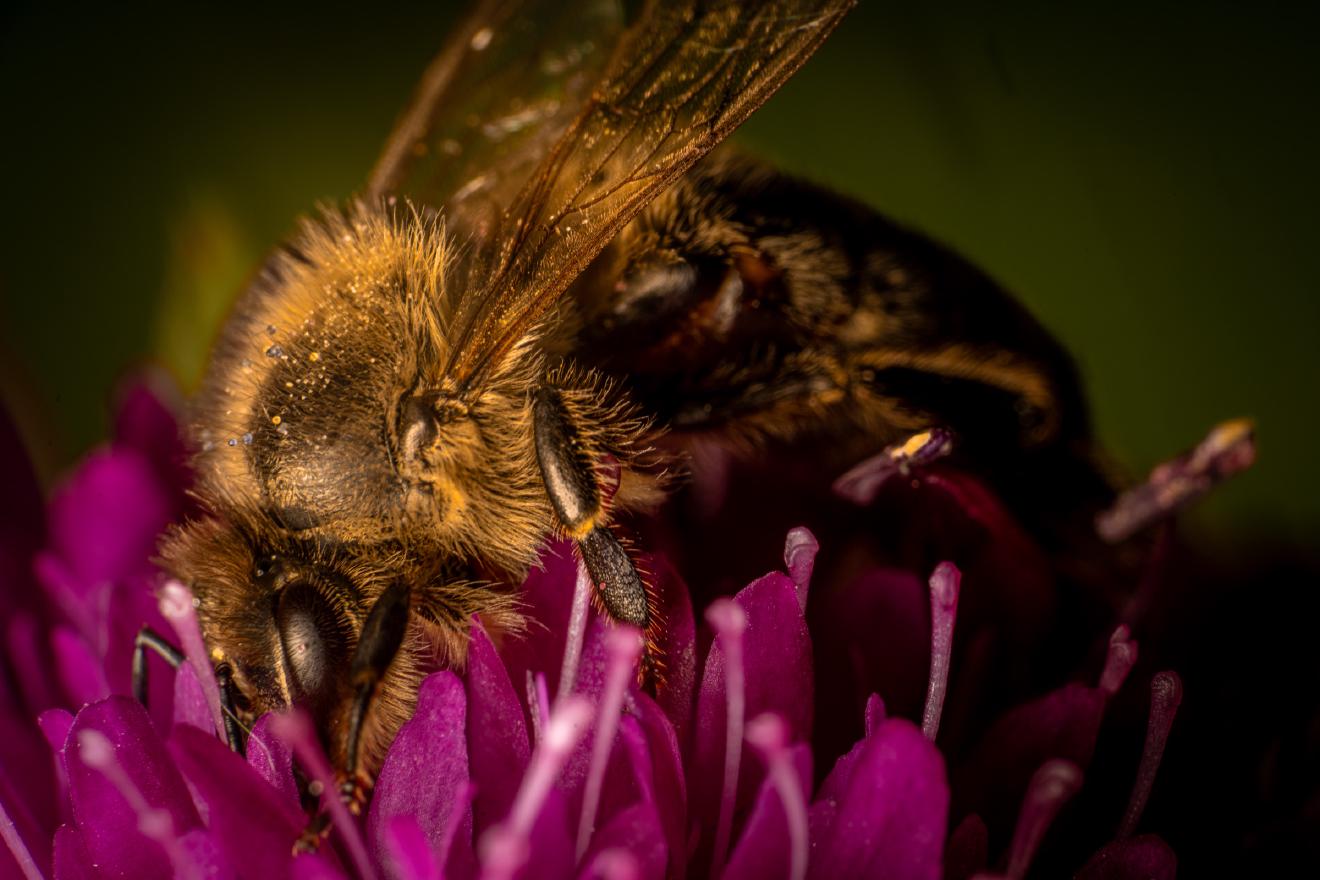
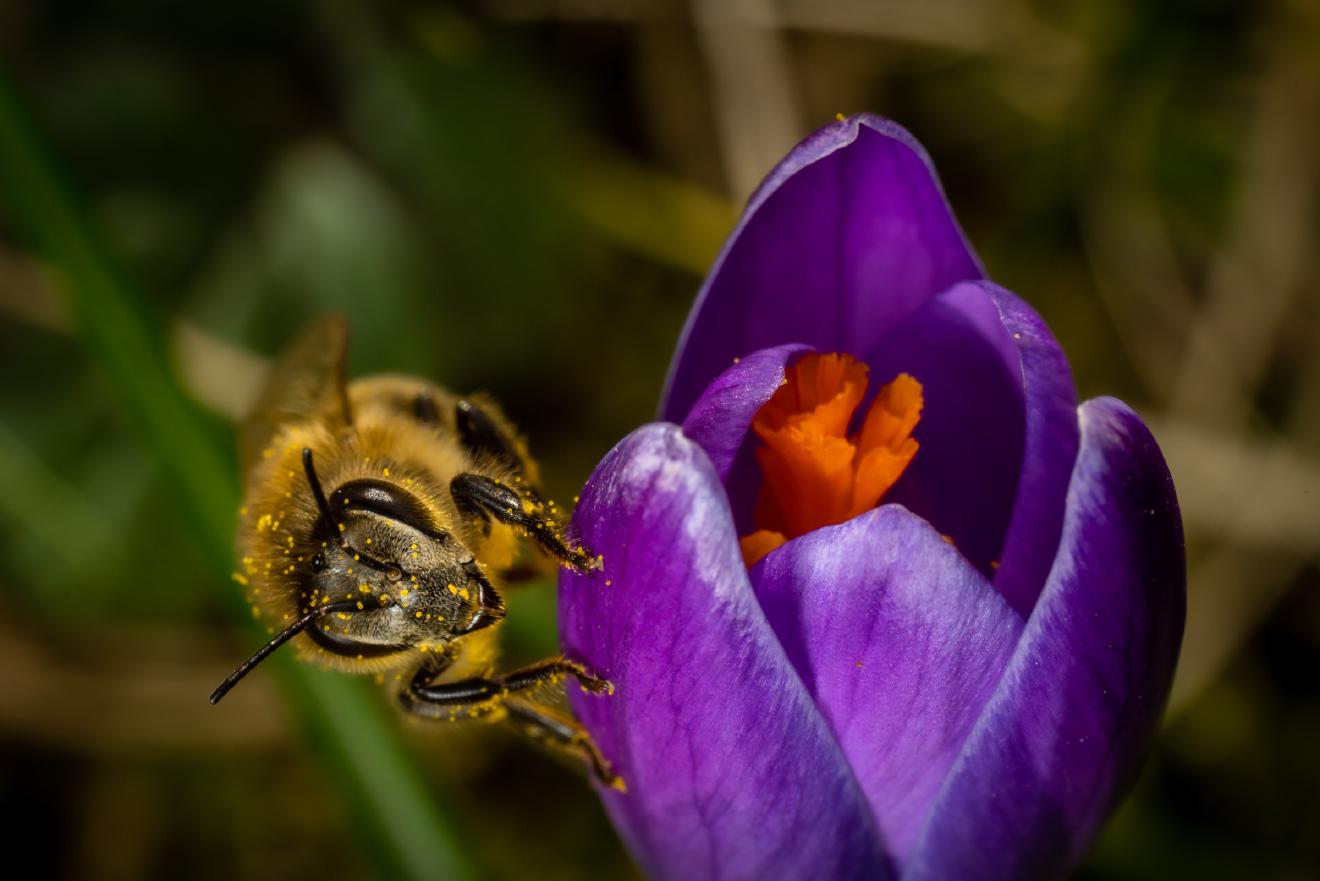
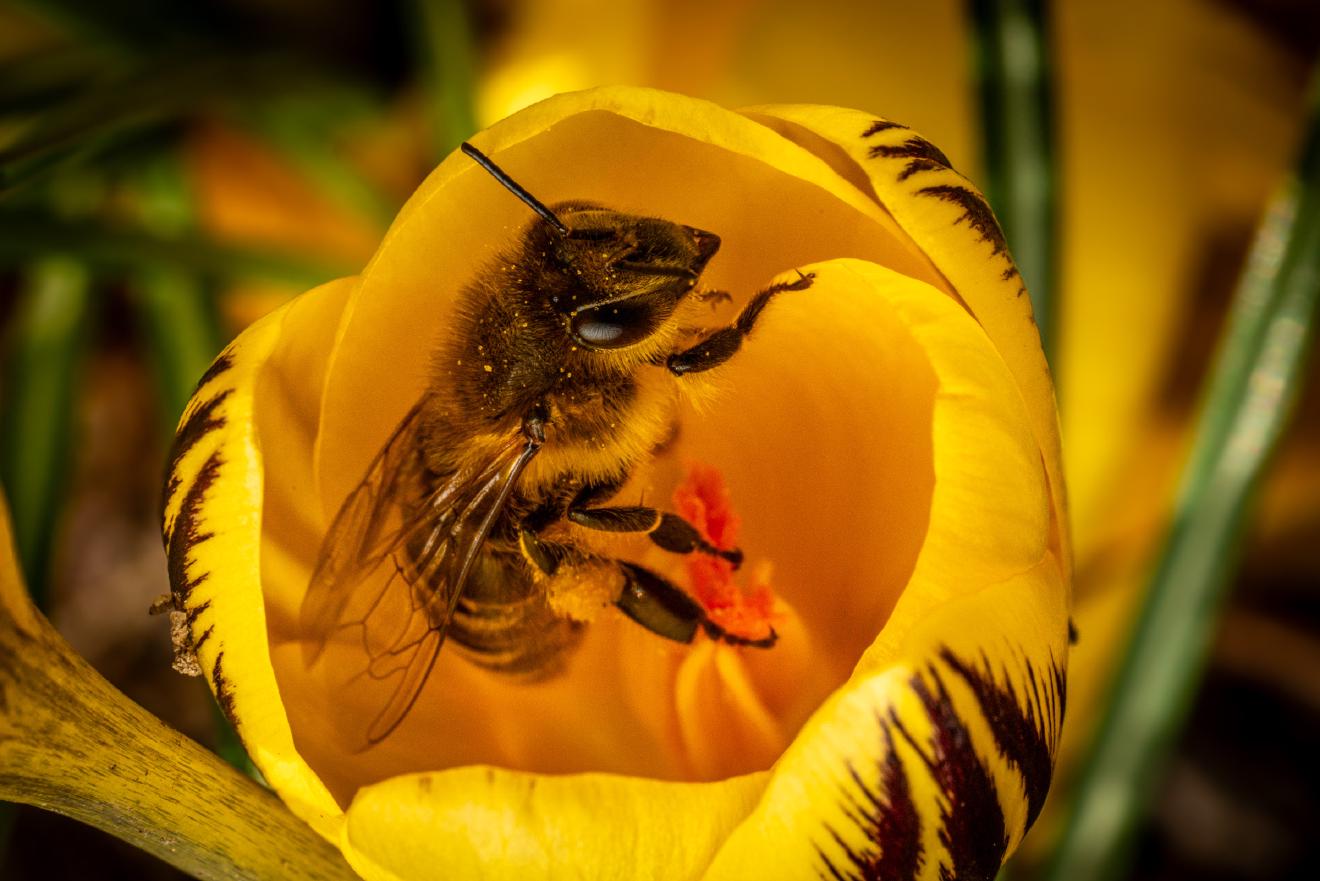
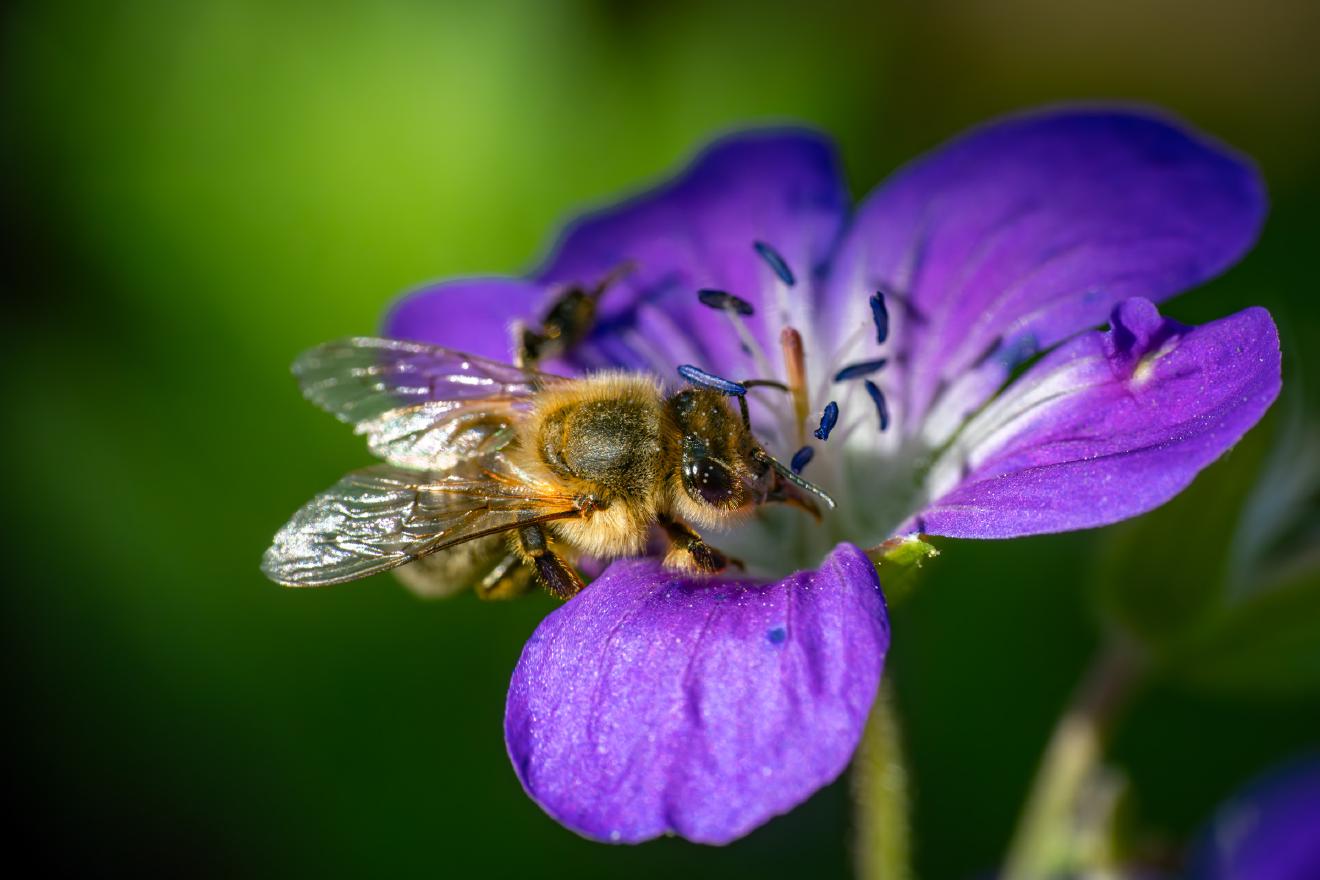
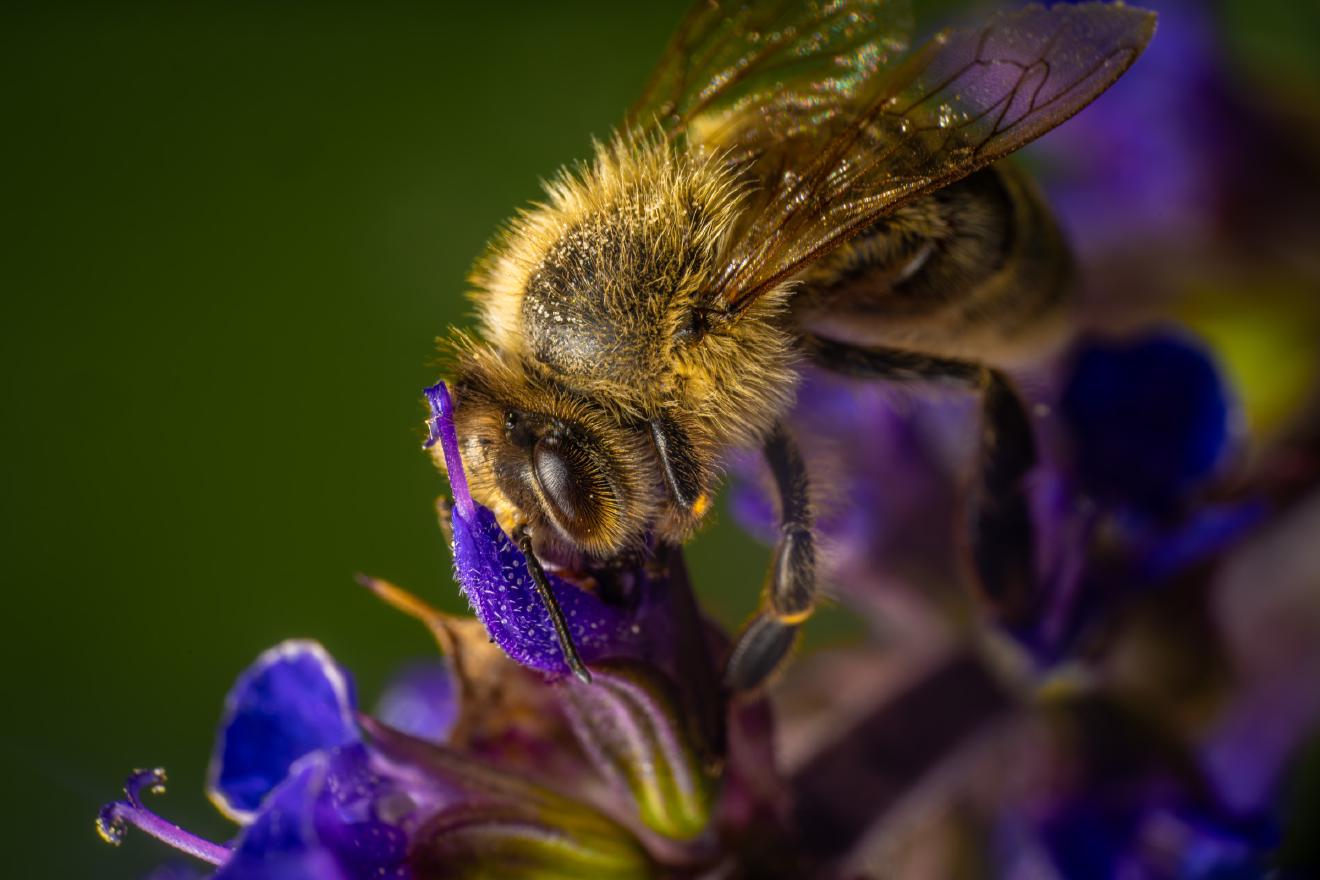

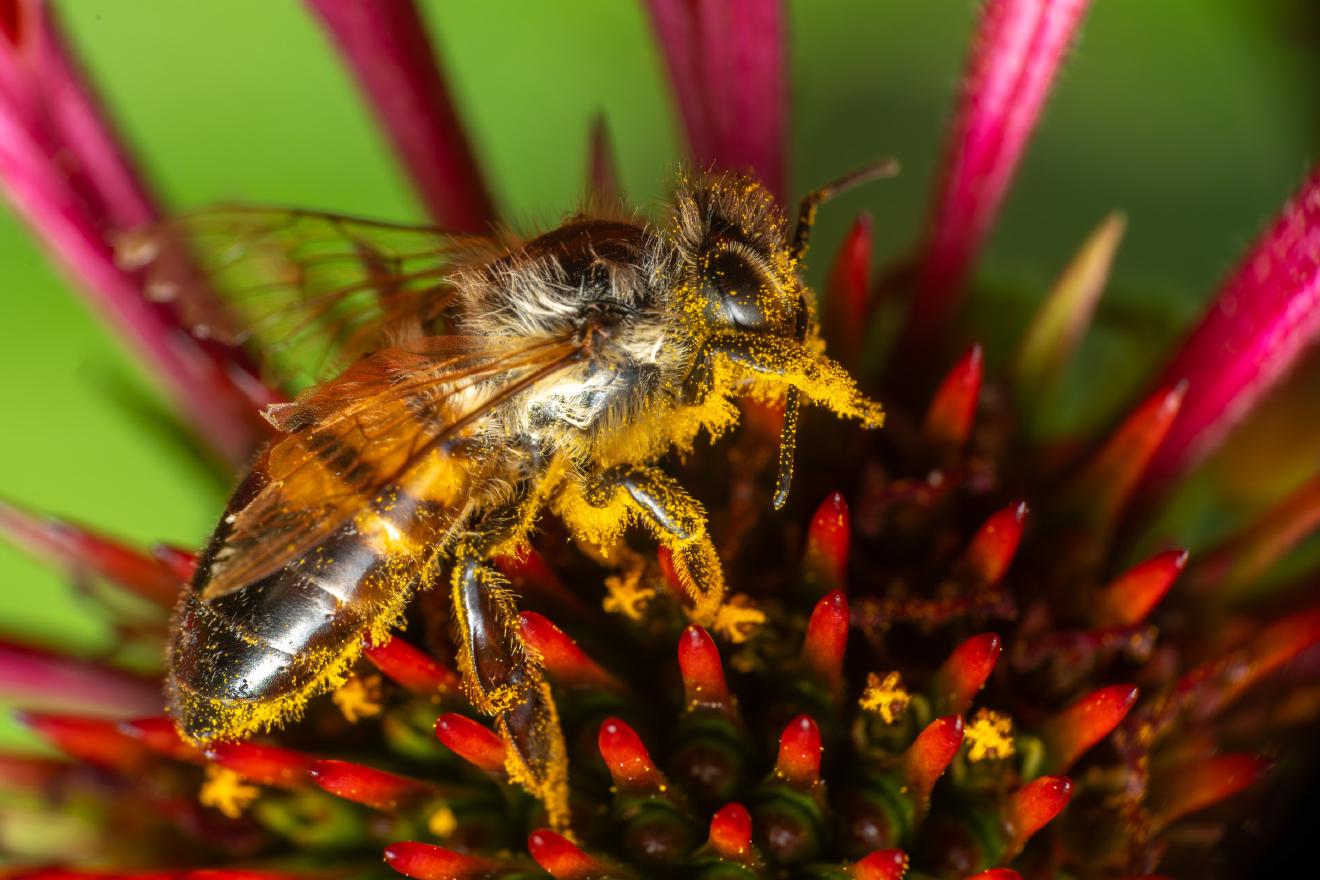
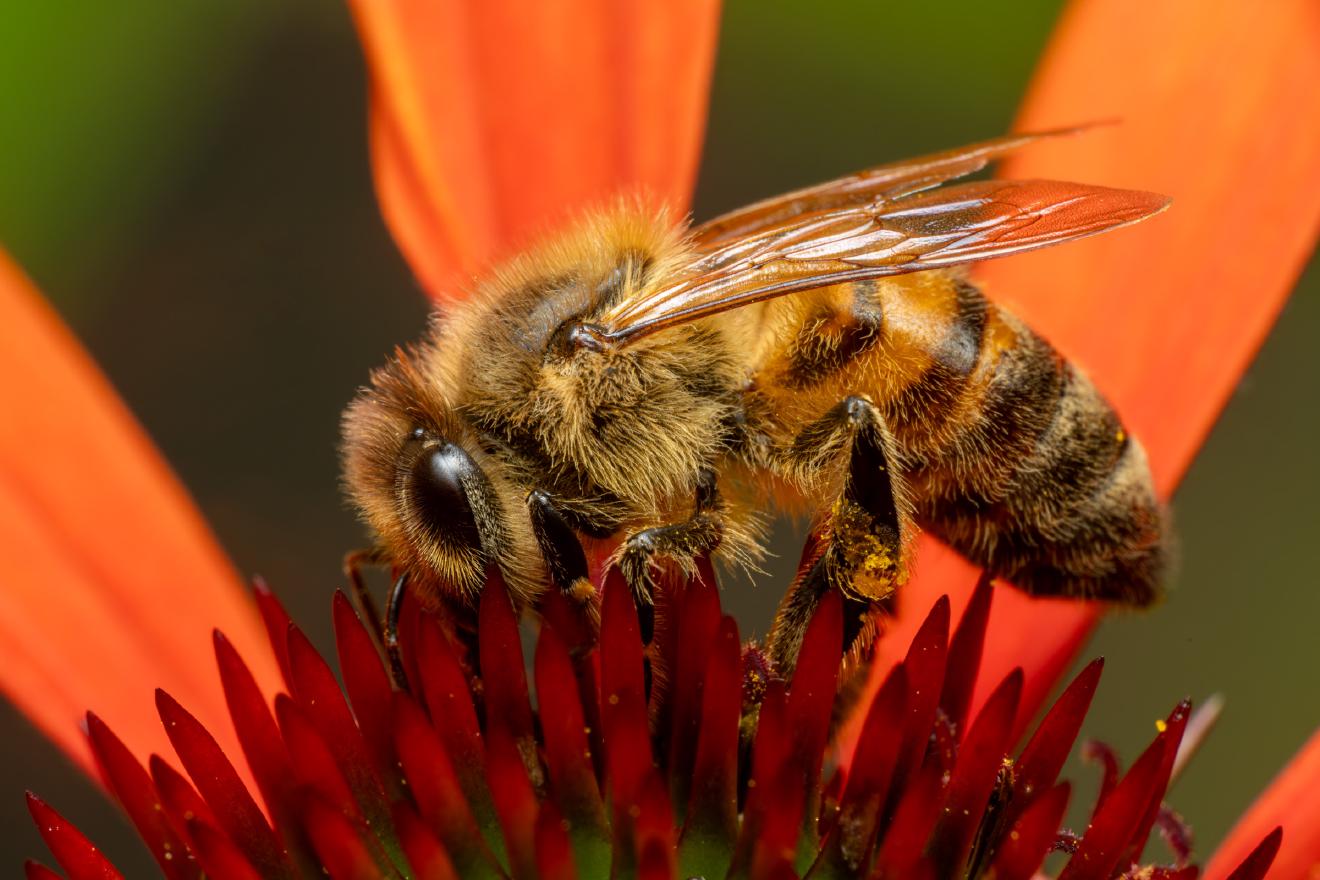
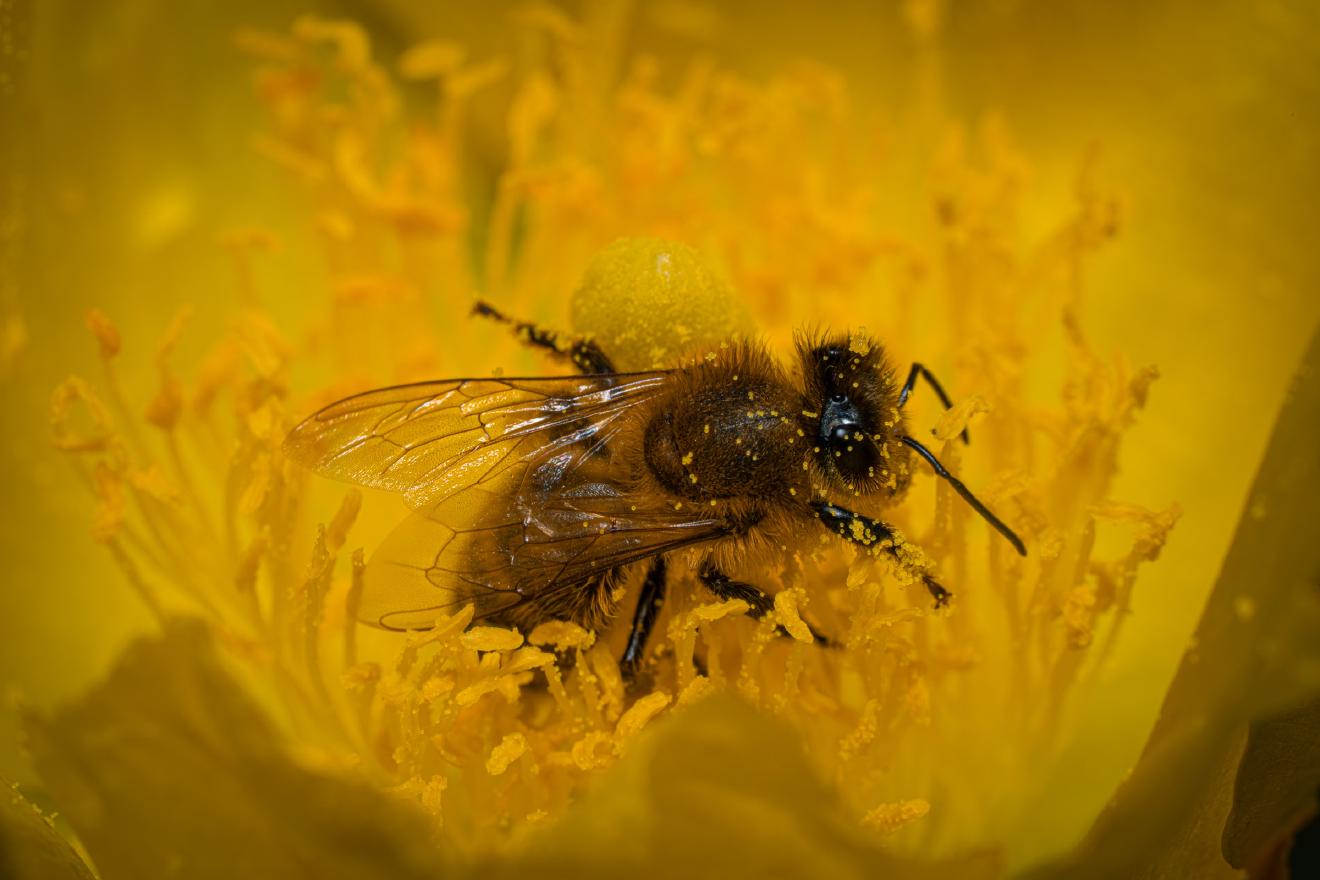

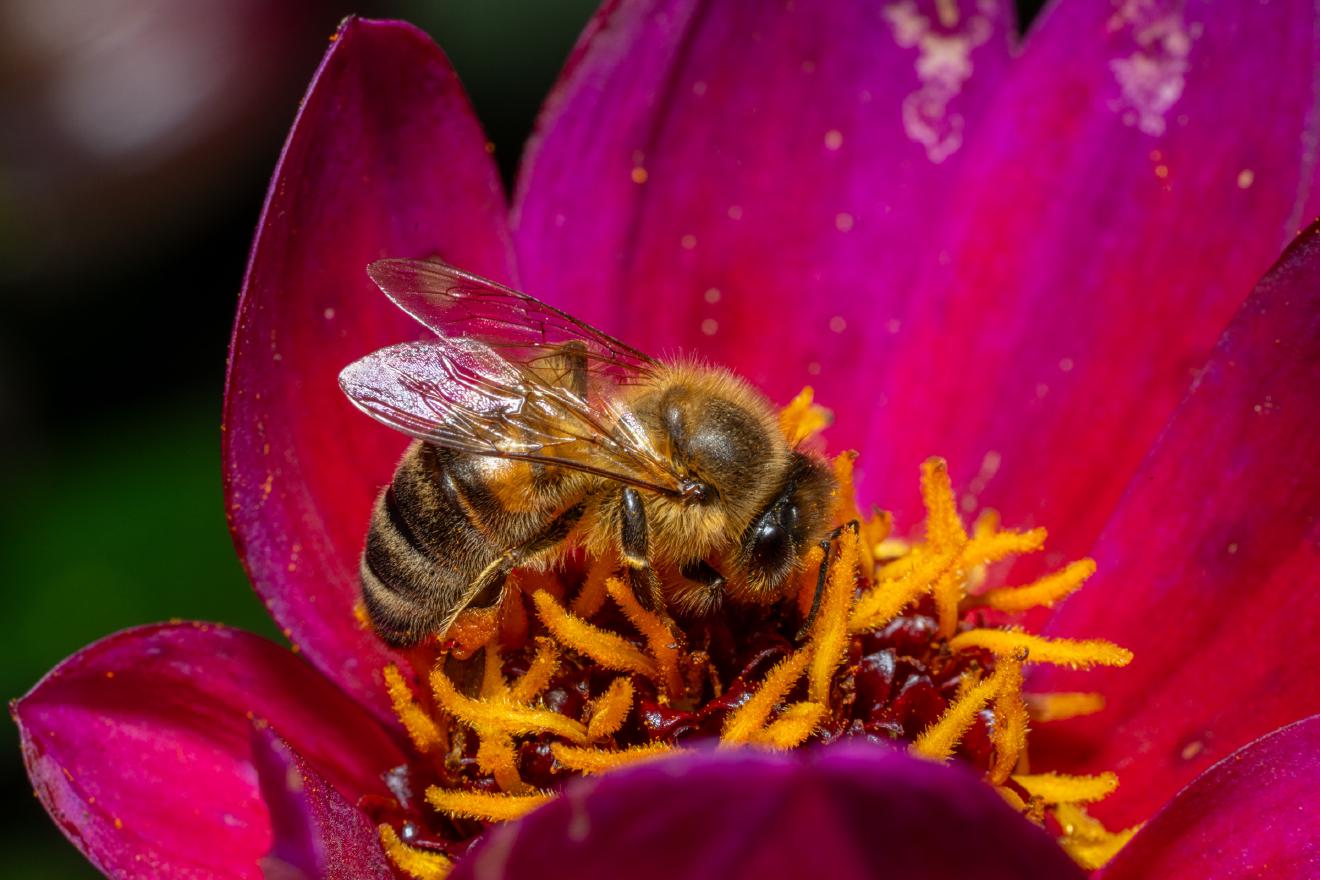
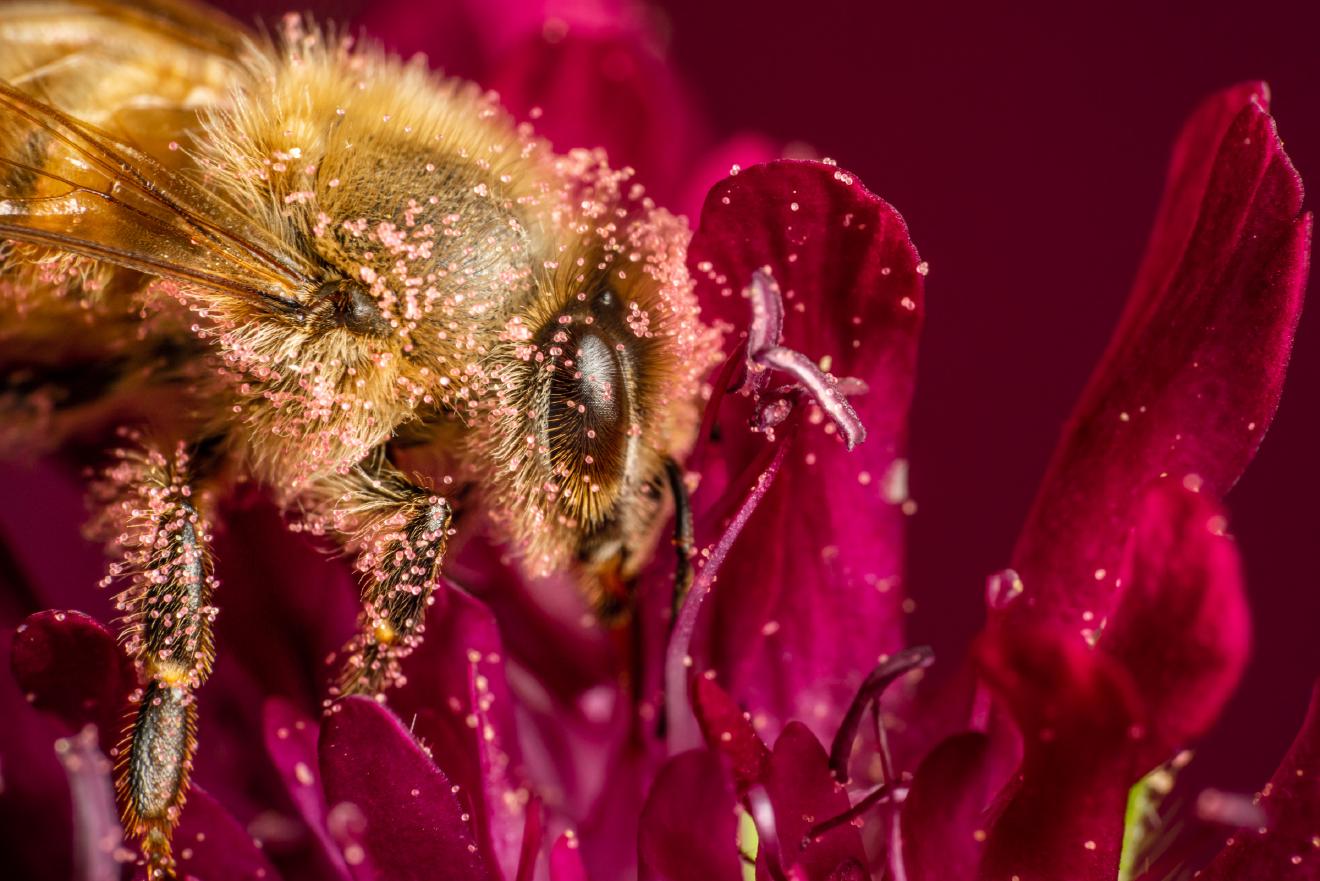

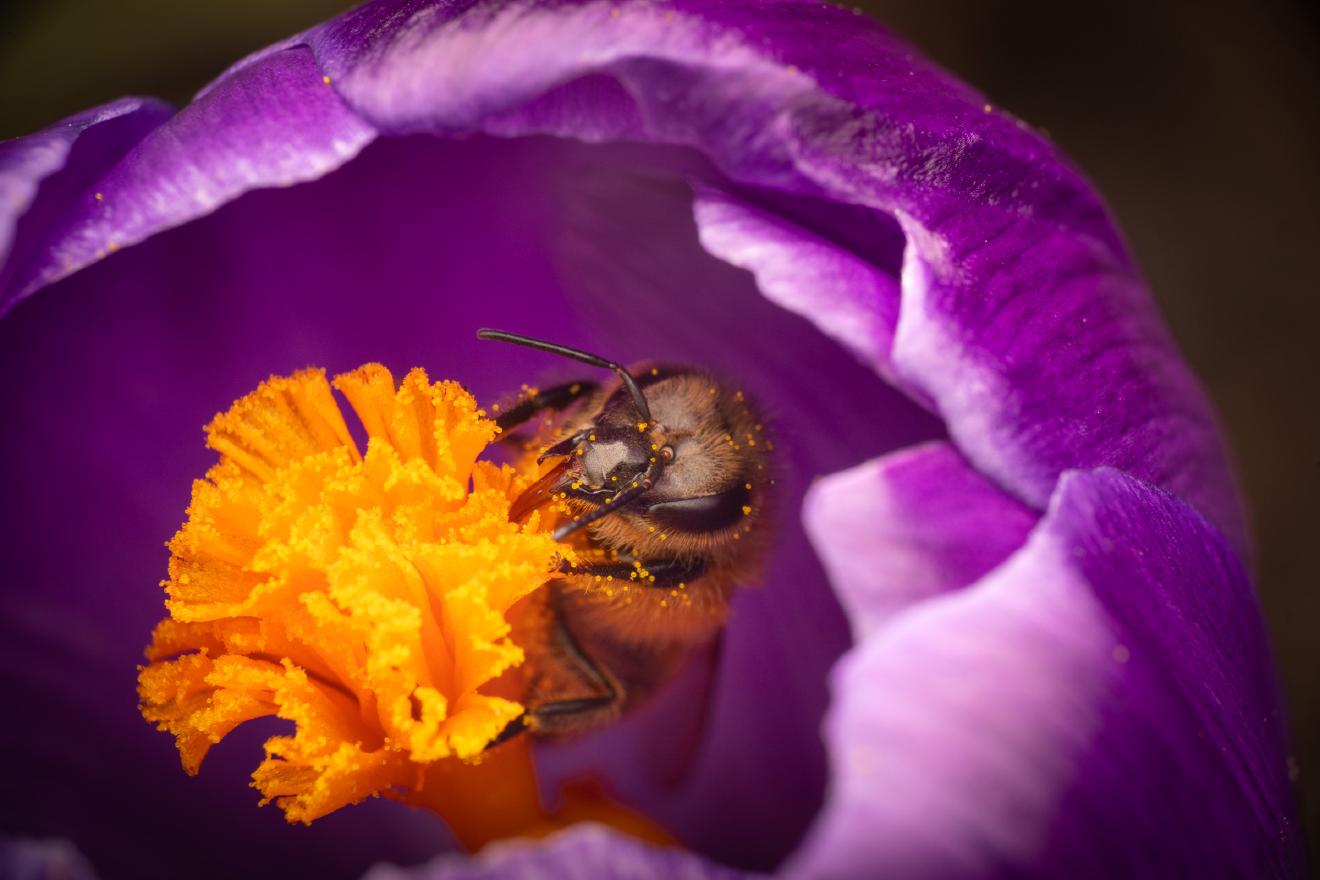
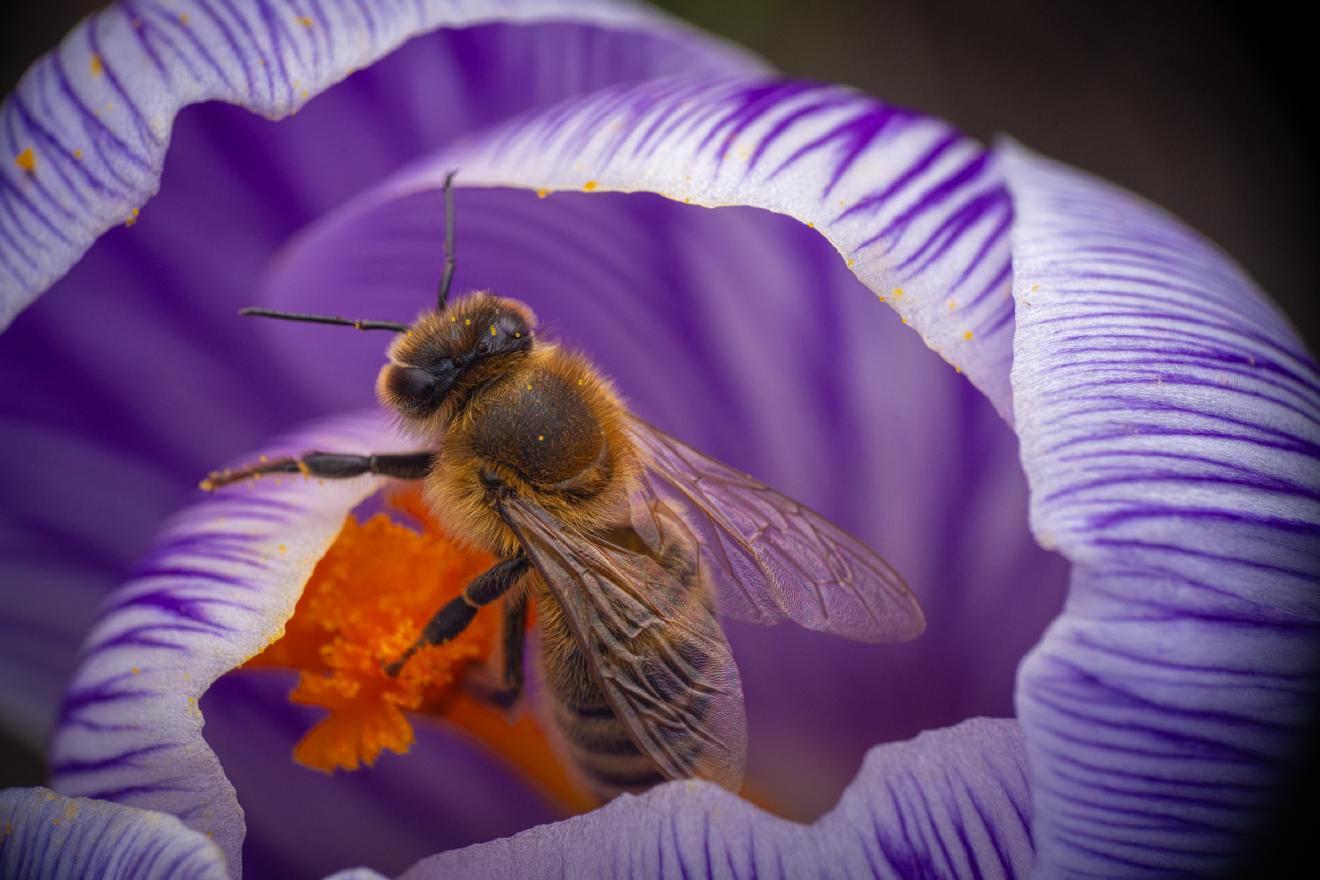

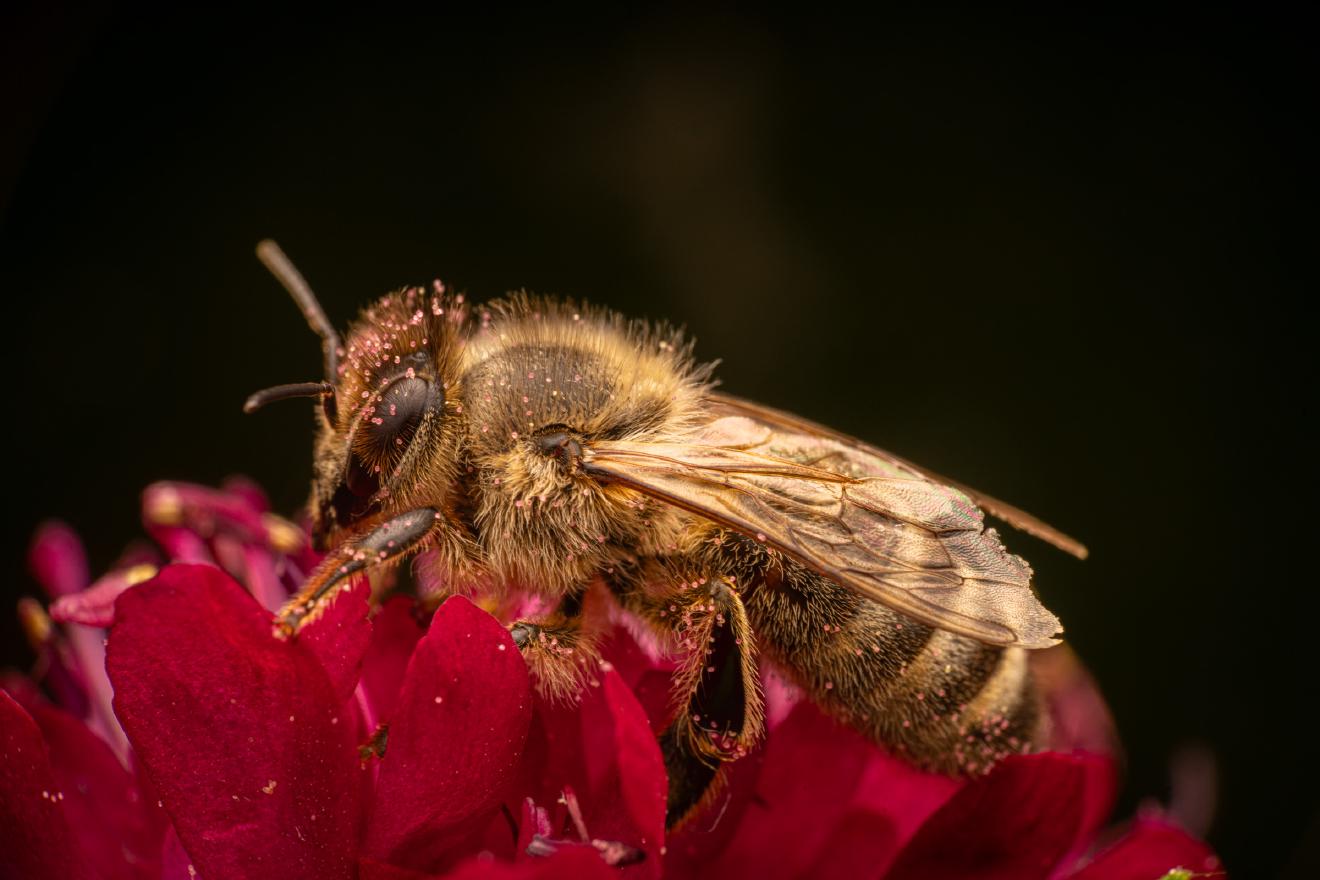
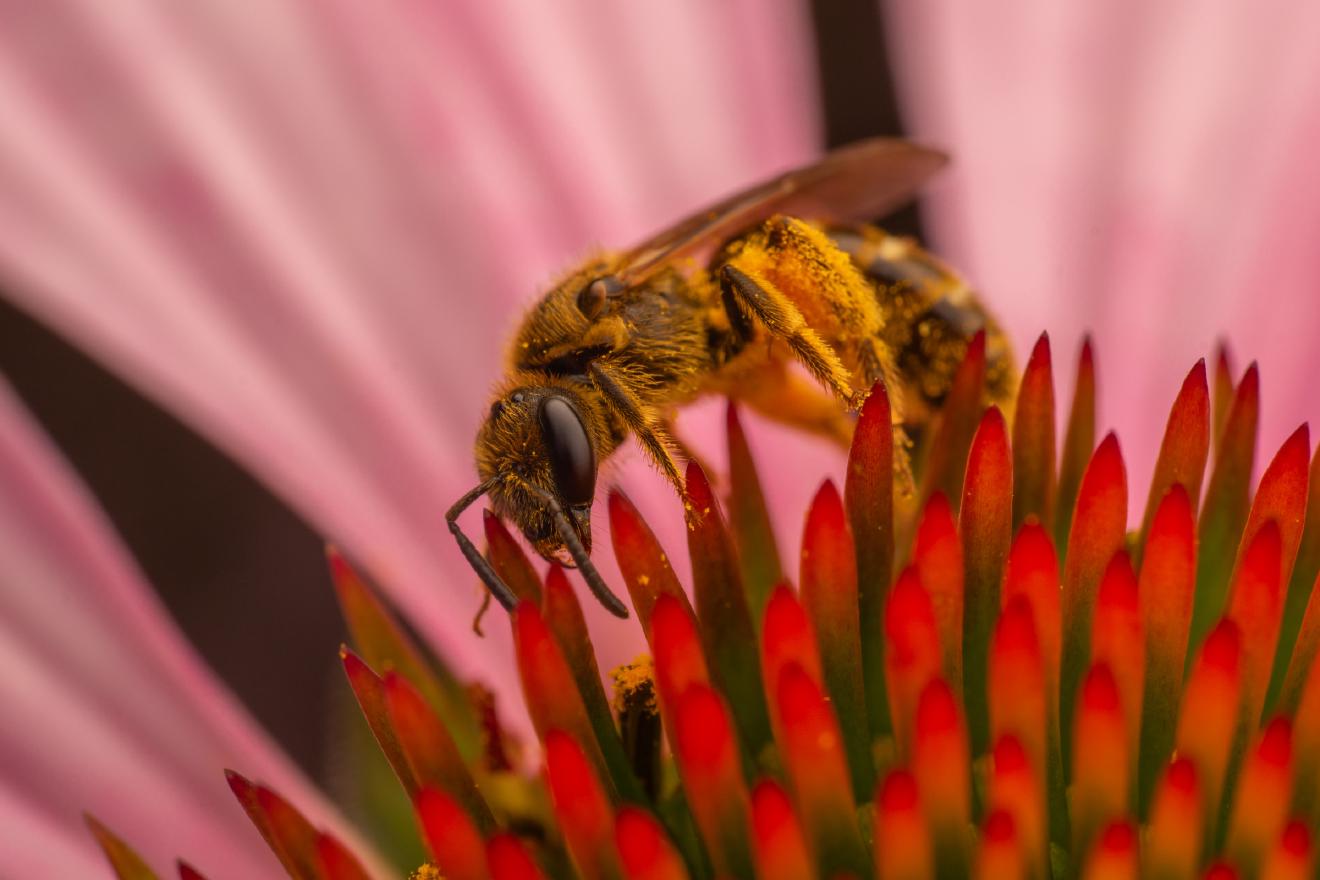
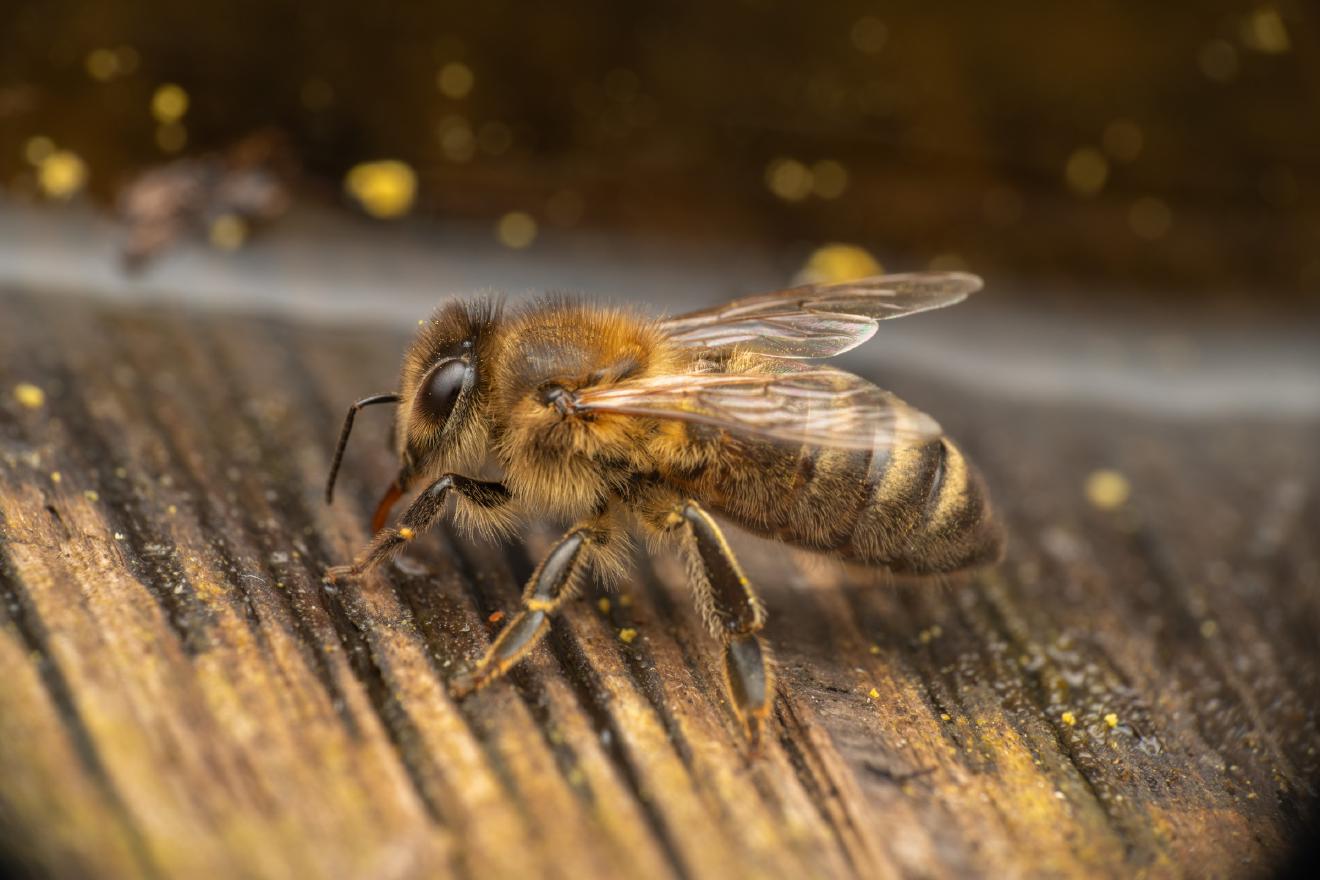
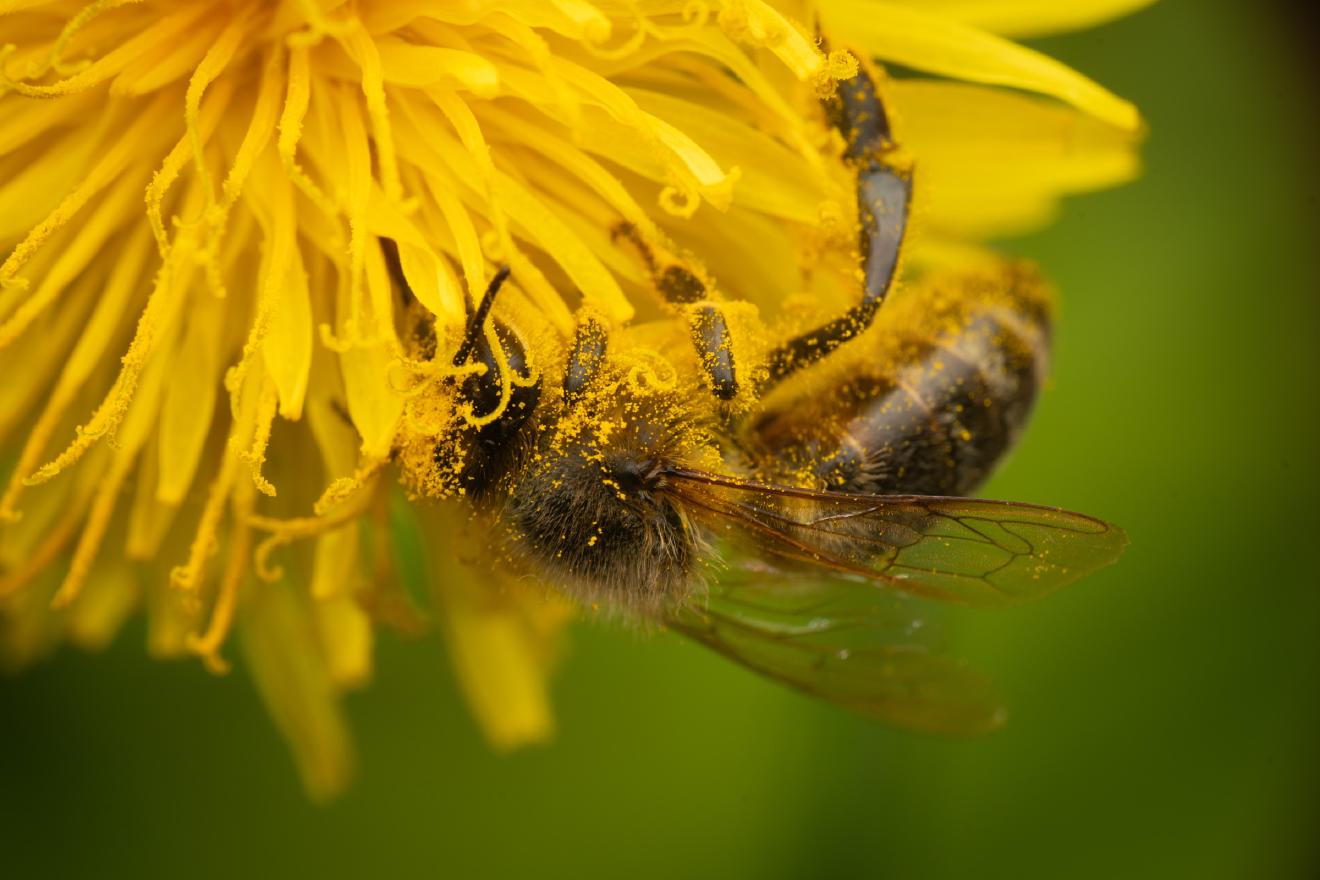
Ancestry Graph
Further Information
Copyright

This article uses material from the Wikipedia article Apis mellifera the free encyclopedia Wikipedia which is released under Creative Commons Attribution-ShareAlike 4.0 International License). On Wikipedia a list of authors is available.
